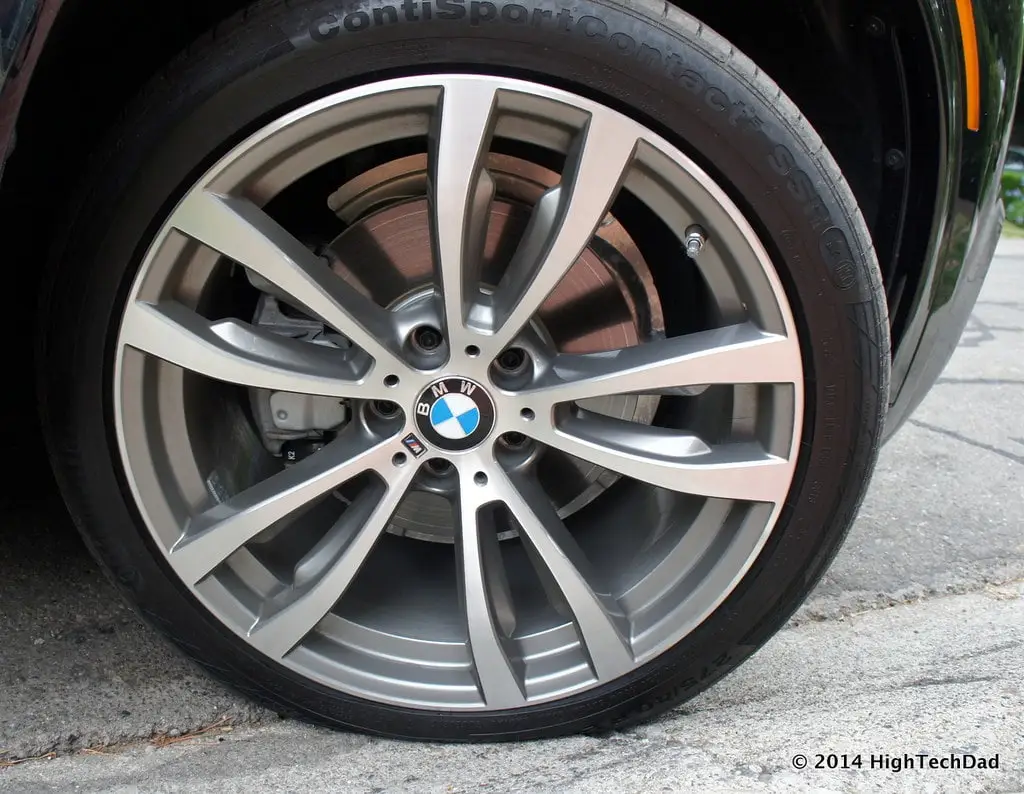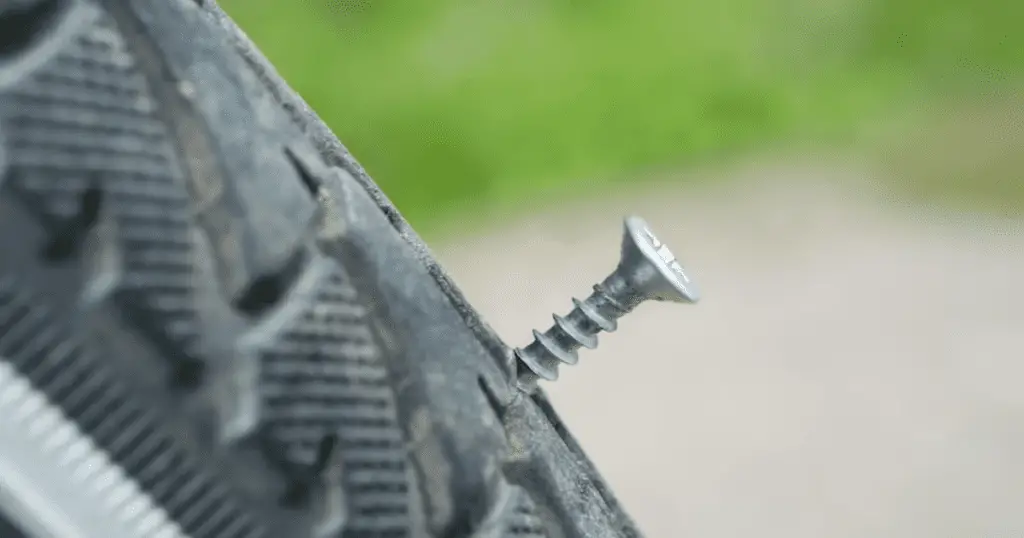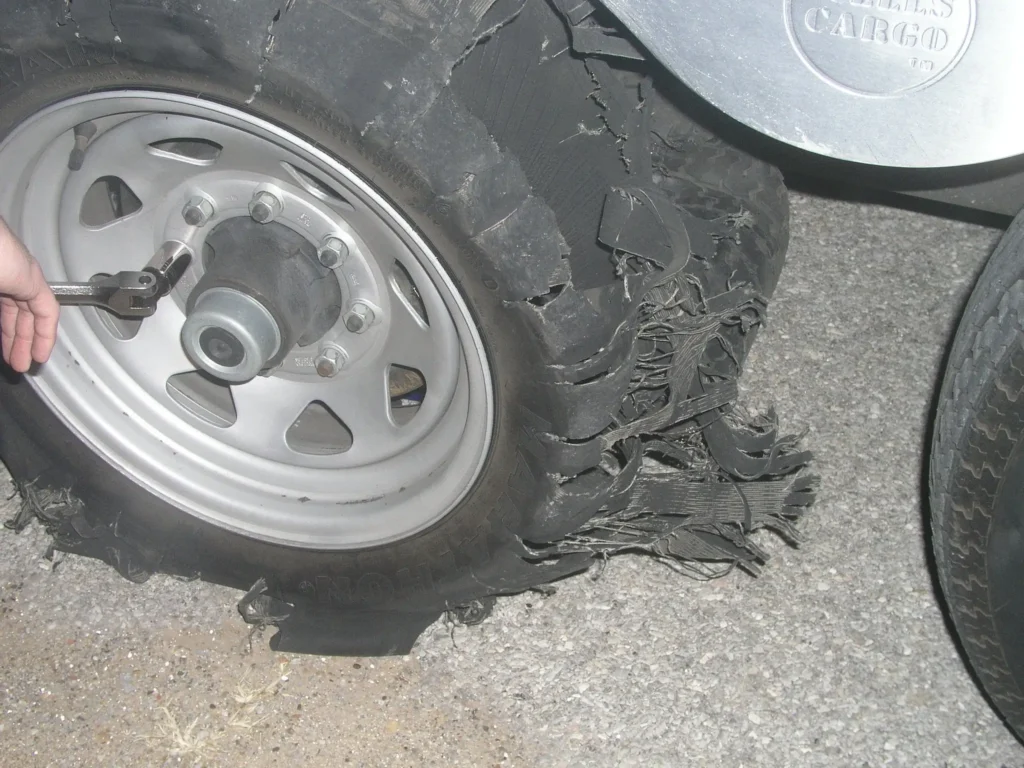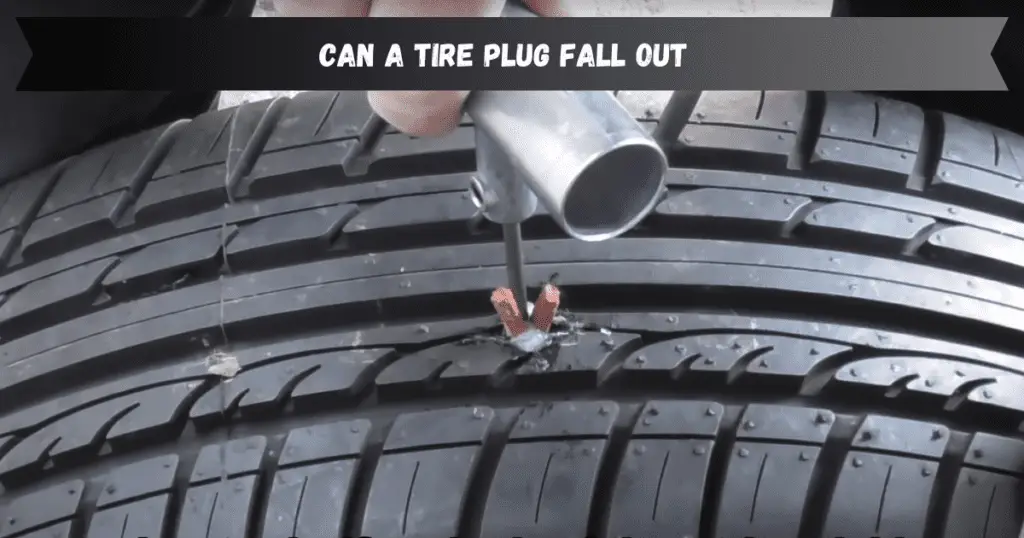Run-flat tires are a popular feature on many modern vehicles, especially luxury brands like BMW and Mercedes. Their stiff sidewalls allow you to continue driving even with a puncture. But can you Plug a run-flat tire like a regular one? Let’s find out.
What Are Run Flat Tires?
Run flat tires get their name from the ability to run even when flat. They utilize stiff sidewalls that support the weight of the vehicle when air pressure is lost.
This allows the driver to continue for limited distances at reduced speeds to find a safe place to stop. Most run-flats will let you drive around 50 miles at 50 mph after a puncture.
There are two types of run-flat tire designs:
- Self-supporting: The sidewalls are reinforced to bear the vehicle’s weight when deflated. This is the most common type.
- Support ring system: Uses an additional ring attached to the wheel to support the tire if deflated. Doesn’t alter regular driving dynamics.
All run flats must be paired with a tire pressure monitoring system (TPMS) to alert drivers of pressure loss.
Advantages of Run Flat Tires
There are some clear benefits to running flat tires:

- Safety – If a blowout occurs, the stiff sidewalls prevent destabilization and allow controlled stopping.
- No spare tire – Eliminates the need to carry a spare, which saves weight and trunk space.
- Mobility – The ability to drive up to 50 miles gives you time to find a tire shop.
Disadvantages of Run Flats
However, there are also some downsides:
- Harsher ride – The stiff sidewalls compromise comfort and handling.
- Faster wear – The added weight accelerates treadwear. Replacement comes sooner.
- Lower speed rating – Can’t drive at high speeds for long with a run-flat tire.
- More expensive – Cost more upfront than comparable standard tires.
What Does “Plugging a Tire” Mean?
Plugging a tire refers to using plugs and rubber cement to seal a puncture in the tread area. It’s a common temporary fix for regular tires.
Tire plug kits are widely available and easy to use. But plugging does carry some risks:
- Opening the hole with the reamer can damage internal components like belts.
- An improper repair can weaken the tire and lead to failure.
- Larger punctures beyond 1/4 inch require professional repair.
Can You Plug A Run Flat Tire? So while plugging a tire can get you back on the road quickly, it’s not considered a permanent fix. Proper patching from the inside is better for long-term repair.
Can You Plug a Run Flat Tire?
The short answer is yes, you can plug a run-flat tire. But most manufacturers strongly advise against it.
Plugging run flats carries greater risks than standard tires. Here’s why you should avoid it:
- Structural damage – The reamer and plug can harm the critical sidewall structure needed to support the vehicle.
- No guarantee – An improper DIY repair could lead to catastrophic failure of the run flat.
- Voided warranty – Any plug repair will void the manufacturer’s coverage.
- Safety hazard – Compromising the run flat system poses a serious safety risk to drive the vehicle.
So while it’s technically possible that can you plug a run flat, doing so is extremely risky and will permanently damage the tire’s self-supporting capability.
Should You Patch a Run Flat Instead?
Can you Plug a Run Flat Tire? Patching a run-flat tire from the inside is a safer method of repair. But it still requires care and the right equipment:
- The tire must be demounted from the wheel to access the inner liner.
- Finding the puncture channel can be difficult without fully deflating the stiff sidewalls.
- Specialized tools and patches may be required to flex the sidewalls for repair.
For these reasons, patching is best left to a trained professional tire technician. Make sure whoever repairs a run-flat tire has expertise with the unique demands.
While less risky than plugging, patching run flats remains more complex than a standard tire. Improper repairs can still void warranties or lead to failures down the road.
Can You Repair All Run Flat Tire Brands?
Most major tire manufacturers permit repairs of run-flat tires, but only under certain conditions:
- Michelin – Allows repairs of punctures under 1/4 inch on tread area only. No repairs to the sidewall or shoulder region.
- Bridgestone – Allows plugging within tread center 3/4 inch. Discourages repairs to shoulder or sidewall.
- Continental – Permits repairs under 1/4 inch only in tread center. No repairs to the shoulder or sides.
- Pirelli – Allows small puncture repairs in the tread area. No repairs to sidewalls or shoulders.
In all cases, repairs can only be done by a qualified tire technician. DIY repairs will void warranties. Damages beyond a certain point will require full tire replacement.


When Should You Avoid Repairing a Run Flat?
Can You Plug A Run Flat Tire? There are certain situations when a run-flat tire should not be repaired:
- Sidewall damage – Any cut, tear, or puncture to the sidewalls is unsafe to repair. This area is vital to running a flat function.
- Used its run-flat capability – If you drove long distances or at high speeds after a puncture, the tire may be too compromised to repair.
- Large punctures – Repair is not recommended for holes over 1/4 inch in diameter. The tire should be replaced instead.
- Visible or internal damage – If a visual inspection shows cords, bulges, cracks, or other flaws, the tire should be replaced rather than repaired.
Frequently Asked Questions
What happens if I plug a run-flat tire?
Plugging a run-flat tire can severely damage its self-supporting sidewall structure. This will permanently compromise safety and lead to tire failure or blowout later on. Never plug a run-flat tire yourself.
Can you fix a run-flat tire with a nail in it?
No, punctures from nails or other objects should never be repaired plug-style. The proper fix is to have the tire patched from the inside by a professional technician. Plugging run-flat tires is extremely dangerous.
Can a run-flat tire be plugged or patched?
Run flats should only be patched, not plugged. Plugging can cause internal tire damage. Patching from the inside by a tire technician is safer but still not recommended for large punctures or sidewall damage.
Can you plug a tire that is a run-flat tire?
It’s never advisable to plug a run-flat tire. Doing so yourself will likely void any warranty and may severely compromise the tire’s function and safety. Run-flat tires require specialized repair.
How long do run-flat tires last after a puncture?
It depends on the damage, but run flats driven at low speeds for less than 50 miles after a puncture can often be repaired and returned to service. But extensive damage will require full tire replacement.
How long will a tire plug last?
For standard tires, a properly installed plug repair may last for the usable life of the tire. But plugs are considered a temporary fix, and tires with plugs should be closely inspected. Never plug a run-flat tire.
Conclusion
While technically can you plug a run-flat tire, doing so is extremely risky and can lead to dangerous tire failures. Even patching requires expertise and care.
For all run flat tire punctures or damage, your best bet is to have the tire inspected and serviced by a qualified tire technician. They can determine if repair or full replacement is required.
Don’t take shortcuts with run-flat tire repairs. Make sure they are done properly to preserve your safety and avoid voiding the tire warranty. With the right service, a run-flat tire can deliver reliable function over its intended lifespan.





